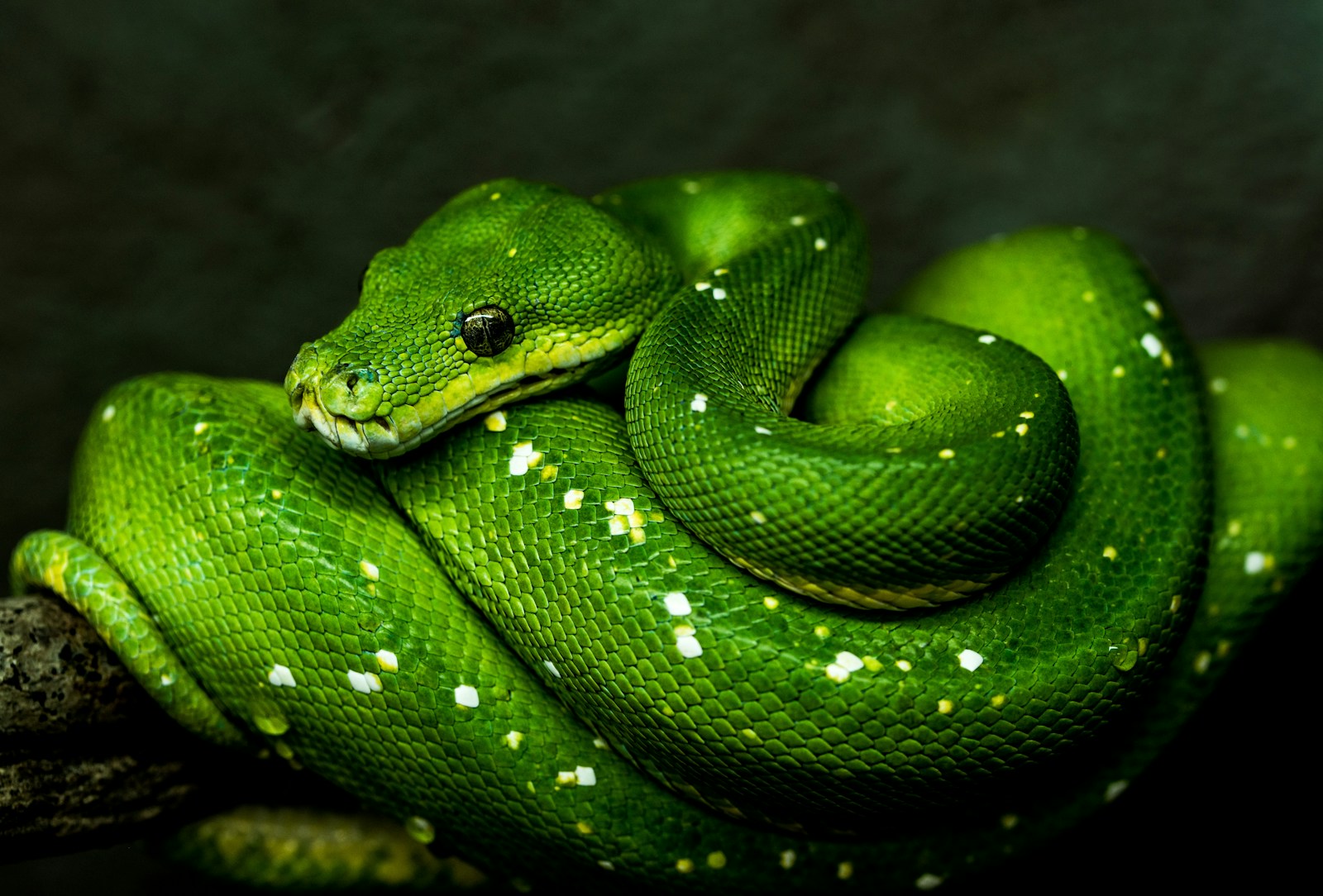The world of snakes is filled with remarkable adaptations that have evolved over millions of years, helping these reptiles become some of nature’s most efficient predators. While many people think of snakes as simple ambush hunters that rely solely on venom or constriction, several species have developed specialized and sometimes bizarre tools for capturing prey. These evolutionary innovations demonstrate the incredible diversity of hunting strategies in the snake world. From modified scales that act as suction cups to specialized tail tips that mimic insects, these adaptations showcase nature’s ingenuity in the endless pursuit of survival. In this exploration of serpentine hunting tools, we’ll discover nine extraordinary snake species that have broken the mold when it comes to predatory tactics.
The Spider-Tailed Horned Viper’s Deceptive Lure
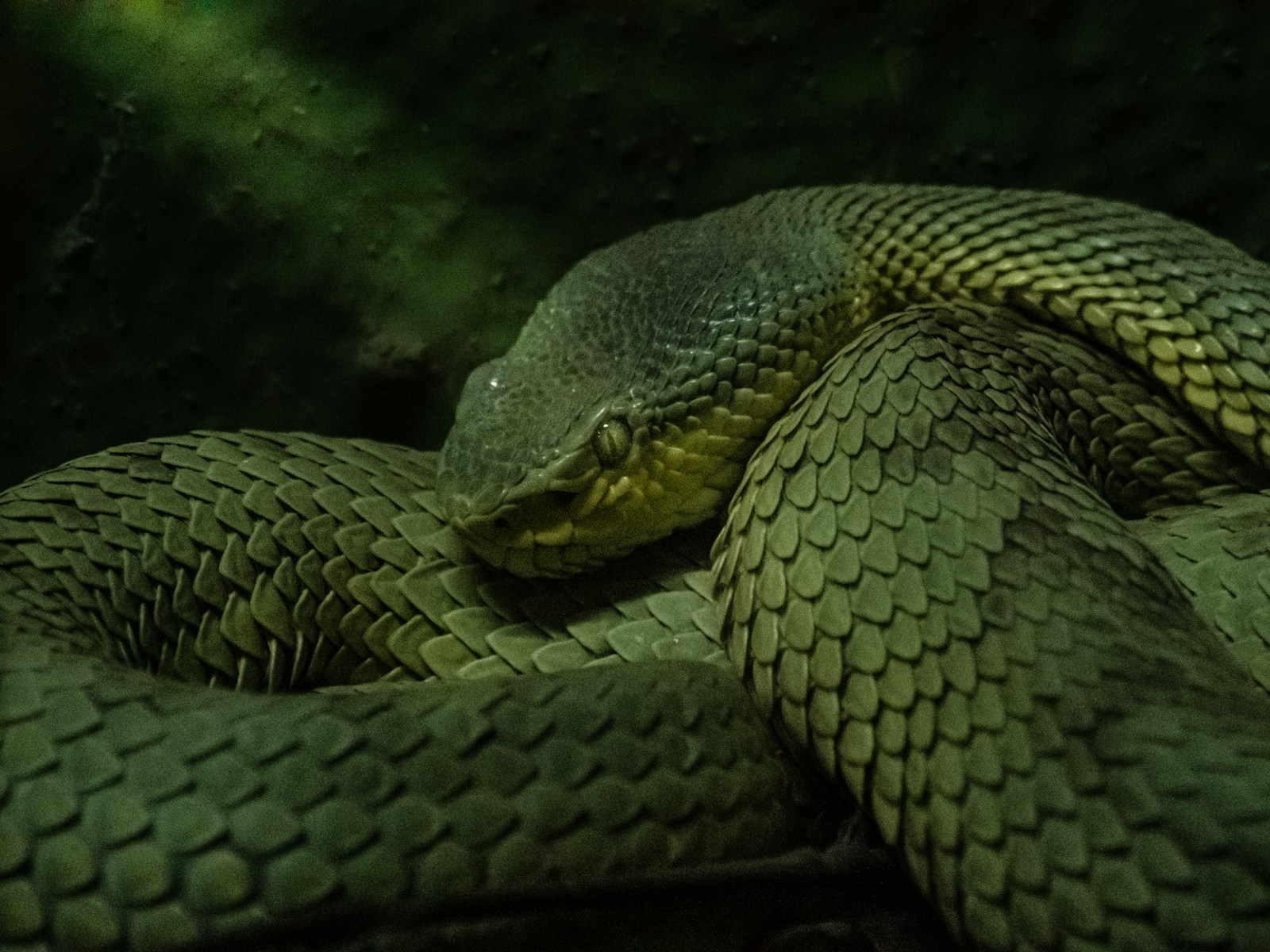
Perhaps the most astonishing example of specialized hunting tools belongs to the Spider-Tailed Horned Viper (Pseudocerastes urarachnoides), native to the rocky desert regions of western Iran. This remarkable snake possesses what appears to be an ordinary tail until closer inspection reveals an elaborate structure at the tip that remarkably resembles a spider or scorpion. The specialized tail scales form a bulbous shape with protruding threads that the snake can wiggle independently, creating an almost perfect mimicry of an arthropod in motion. When hunting, the viper lies motionless, partially concealed among rocks, while actively twitching its tail lure to attract insectivorous birds. When an unsuspecting bird swoops down to capture what it perceives as an easy meal, the viper strikes with lightning speed, delivering a lethal dose of venom. This sophisticated caudal lure represents one of the most complex and specialized hunting tools found in any snake species.
Tentacled Snake’s Specialized Water Sensing Scales

The Tentacled Snake (Erpeton tentaculatum) of Southeast Asia has developed a truly unique hunting apparatus adapted perfectly for its fully aquatic lifestyle. As its name suggests, this snake possesses two distinctive tentacle-like projections extending from its snout, which are actually modified rostral scales. These sensory tentacles contain numerous mechanoreceptors that can detect minute water movements created by nearby fish, essentially functioning as a highly sensitive early-warning system. What makes this snake even more remarkable is its hunting strategy—it forms its body into a J-shape and remains completely motionless until a fish approaches. When the prey comes within range, the tentacled snake doesn’t actually lunge toward the fish but instead creates a slight body movement that causes a pressure change in the water. This triggers the fish’s natural escape response, ironically causing it to swim directly into the snake’s waiting jaws. The combination of specialized sensory tentacles and predictive hunting behavior makes this species one of the most sophisticated aquatic predators in the reptile world.
Arabian Sand Boa’s Specialized Eye Placement
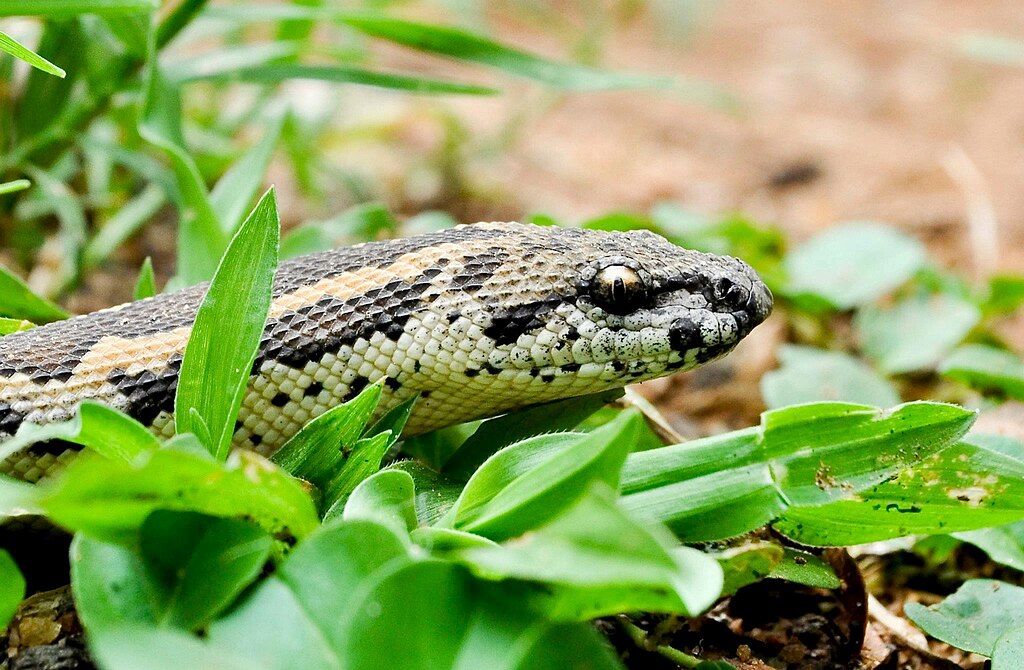
The Arabian Sand Boa (Eryx jayakari) represents an extraordinary example of anatomical adaptation for ambush hunting in loose sand environments. Unlike most snakes whose eyes are positioned on the sides of their heads, this species has evolved eyes that are located on the top of its head rather than on the sides. This unusual placement allows the snake to bury its entire body beneath the desert sand while keeping only its eyes exposed, creating an almost imperceptible presence within its environment. This specialized adaptation enables the sand boa to remain completely hidden while still monitoring the surface for potential prey passing overhead. When small rodents, lizards, or other desert dwellers venture too close, the snake can launch an explosive ambush from below, capturing prey before they even detect danger. This remarkable eye positioning represents a specialized hunting tool that has evolved specifically for the sand boa’s unique ecological niche, allowing it to thrive in harsh desert environments where food resources are scarce and hunting opportunities limited.
Sidewinder’s Specialized Locomotion Adaptations

The Sidewinder Rattlesnake (Crotalus cerastes) has evolved a highly specialized form of movement that serves as both a locomotion method and hunting tool in its desert habitat. The distinctive sidewinding motion—where the snake throws its body in a series of J-shaped loops, creating tracks that resemble dotted lines—minimizes the snake’s contact with scorching hot sand while also providing a tactical advantage when hunting. This specialized movement allows the sidewinder to approach prey with remarkable stealth, as the snake’s body creates minimal vibrations that might otherwise alert potential victims. Additionally, the sidewinder has developed specialized keeled scales along its body that provide enhanced traction in loose sand, allowing for explosive striking speed even on unstable surfaces. Perhaps most remarkably, the snake’s specialized horn-like supraocular scales protect its eyes from sun and blowing sand while still allowing it to track prey from a partially buried position. These combined adaptations form an integrated hunting toolkit that makes the sidewinder one of the most effective predators in challenging desert environments.
Flying Snake’s Aerodynamic Body Design
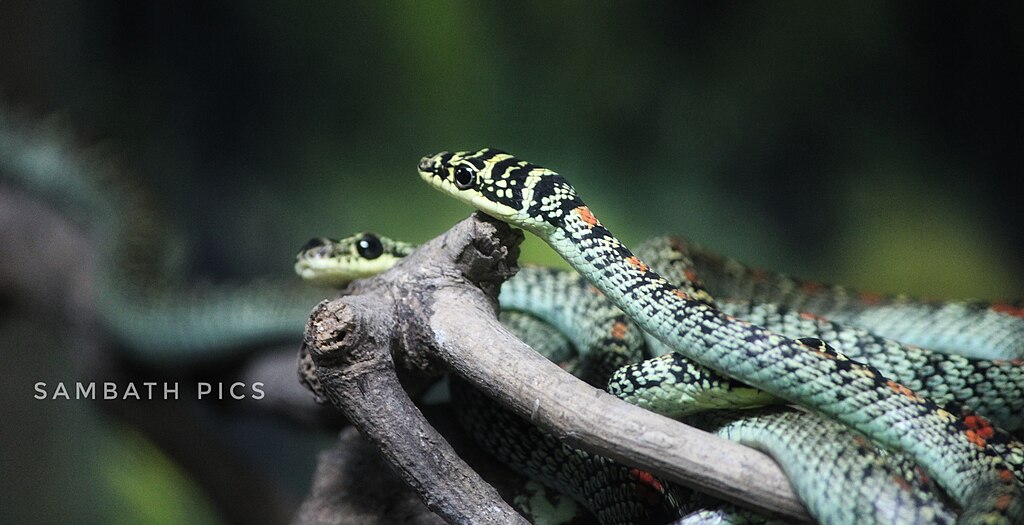
Paradise Flying Snakes (Chrysopelea paradisi) from Southeast Asia have developed a truly extraordinary hunting adaptation that allows them to glide through forest canopies with remarkable precision. These snakes possess specialized concave scales on their undersides that they can flex outward, effectively transforming their cylindrical bodies into a flattened, wing-like shape with a concave bottom that generates lift. When launching from trees, flying snakes can travel up to 100 feet horizontally, controlling their trajectory with subtle body undulations that allow them to target specific landing points. This remarkable adaptation serves as a hunting tool by enabling the snake to access prey in separate trees without having to descend to the ground, effectively expanding their hunting territory in three-dimensional space. The flying ability also allows these snakes to escape predators and potentially surprise prey from unexpected angles, giving them a significant advantage in arboreal environments. While not technically “flying” (as they don’t generate thrust), these snakes’ gliding adaptations represent one of the most sophisticated locomotory hunting tools in the reptile world.
Egg-Eating Snake’s Specialized Jaw Structure

The African Egg-Eating Snake (Dasypeltis scabra) has evolved perhaps one of the most specialized feeding apparatuses in the snake world, designed specifically for a diet consisting exclusively of bird eggs. Unlike other snakes, egg-eaters possess almost no teeth, as they would be a hindrance to their specialized feeding method. Instead, they have developed extremely flexible jaws and a remarkably elastic esophagus that allows them to consume eggs many times larger than their own head diameter. The most extraordinary feature, however, is a series of vertebral projections that extend into the esophagus like bony teeth. After swallowing an egg whole, the snake contracts specialized muscles to force the egg against these sharp vertebral processes, slicing open the shell. The egg contents flow into the stomach while the snake regurgitates the compressed, empty shell—a remarkable process that takes just a few minutes. This specialized internal egg-cracking tool allows these relatively small snakes (typically less than three feet long) to exploit a food resource that would otherwise be unavailable to them, effectively eliminating competition from other predators.
Vine Snake’s Binocular Vision Adaptation
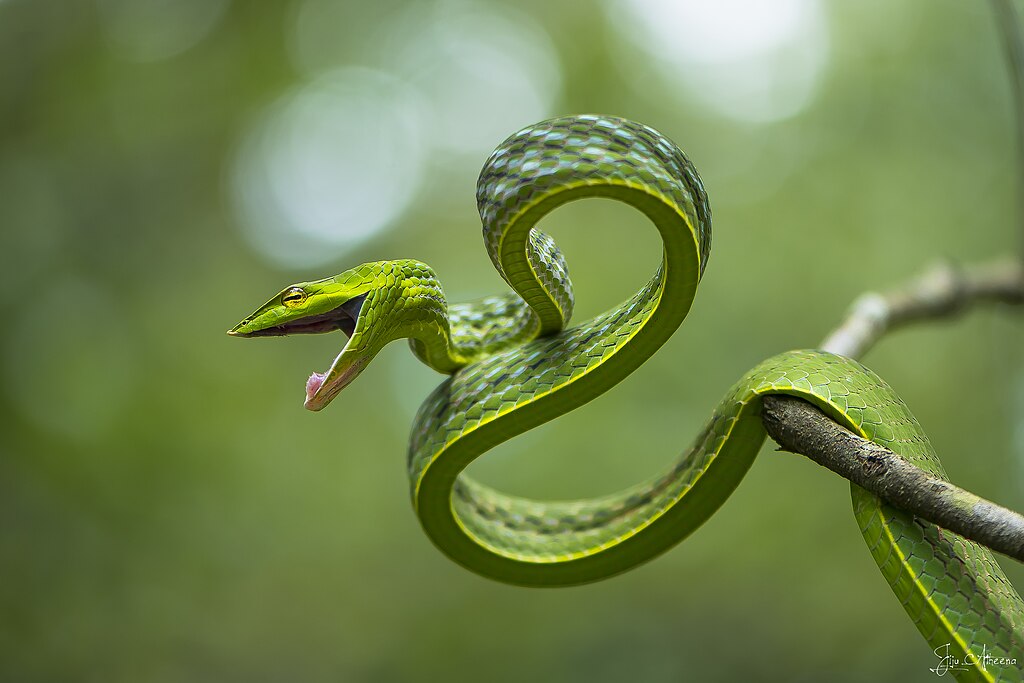
The Asian Vine Snake (Ahaetulla prasina) has developed an extraordinary visual adaptation that serves as a specialized hunting tool in its arboreal environment. Unlike most snakes that have eyes positioned on the sides of their head with limited overlap in visual fields, vine snakes possess large, forward-facing eyes with horizontal, keyhole-shaped pupils that provide significant binocular vision. This adaptation creates depth perception similar to that of predatory mammals and birds, allowing the vine snake to accurately judge distances when striking at prey from precarious perches in the forest canopy. The specialized pupil shape also enhances the snake’s visual acuity in the dappled light conditions of dense vegetation, enabling it to detect the slightest movements of lizards and frogs that make up its diet. Additionally, the vine snake’s elongated head contains specialized scale arrangements that create a pointed snout, which minimizes visual obstruction when the snake focuses on potential prey. This sophisticated visual system represents a remarkable evolutionary hunting tool that has allowed vine snakes to become supremely effective predators in the three-dimensional complexity of tropical forest habitats.
Aquatic Fishing Snake’s Specialized Pressure Sensors
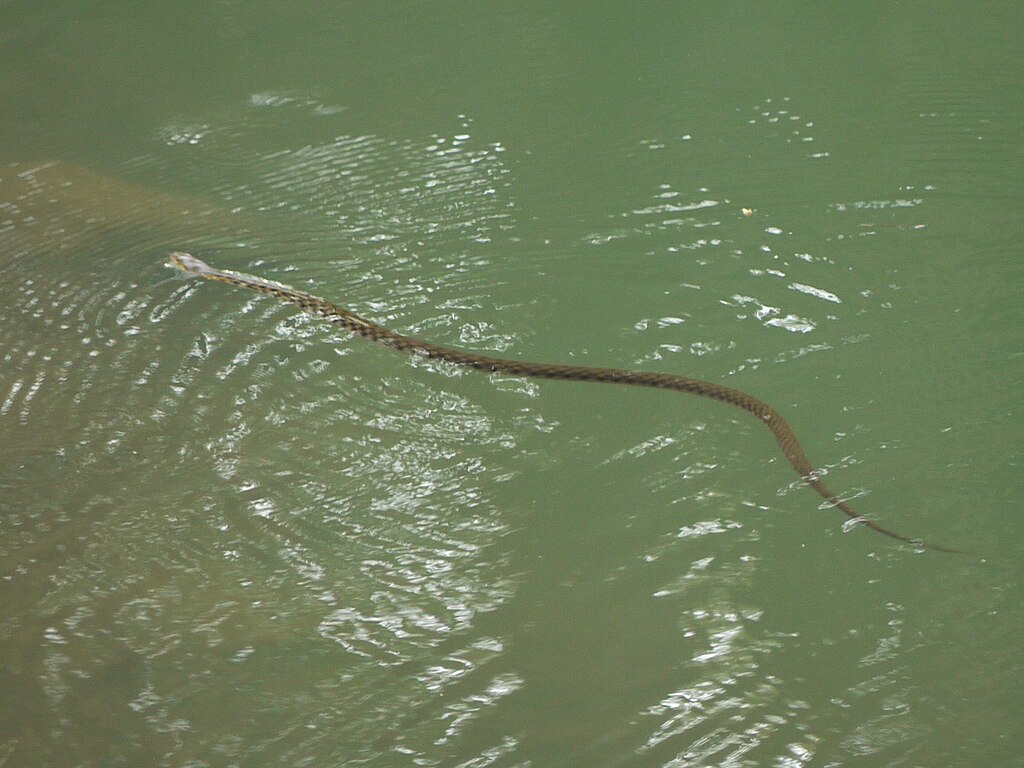
The Tentacled Water Snake (Erpeton tentaculatum) has developed extraordinary specialized pressure-sensing receptors along its body that function as sophisticated underwater hunting tools. These mechanoreceptors, concentrated particularly along the lower jaw and sides of the body, can detect minute pressure changes in the water created by the movement of nearby fish. This sensitivity is so acute that the snake can precisely locate prey even in completely murky water where visibility is zero. When hunting, these snakes adopt a distinctive J-shaped posture, remaining motionless until their pressure sensors detect an approaching fish. Most remarkably, these snakes have evolved predictive hunting behavior—rather than striking directly at the fish’s current position, they strike at where the fish will be after executing its escape response. This specialized sensory system combined with predictive strike behavior creates a remarkably effective hunting strategy that allows these fully aquatic snakes to achieve exceptionally high success rates when capturing fast-moving aquatic prey, even in challenging visibility conditions.
Hognose Snake’s Specialized Upturned Snout

The Eastern Hognose Snake (Heterodon platirhinos) possesses a distinctive upturned snout that serves as a specialized digging tool essential to its hunting strategy. This modified rostral scale creates a shovel-like projection that allows the snake to efficiently excavate sandy or loose soil. While seemingly simple, this adaptation plays a crucial role in the hognose’s specialized diet, as it primarily feeds on toads that often bury themselves for protection or hibernation. The snake uses its upturned snout to dig into the substrate and unearth hidden toads that would be inaccessible to other predators. Additionally, this specialized snout helps the hognose to rapidly bury itself when threatened or when establishing an ambush position. What makes this adaptation even more remarkable is that the hognose snake has also evolved a resistance to the potent bufotoxins produced by toads, allowing it to exploit a prey resource that is toxic to most other predators. This combination of specialized digging equipment and physiological adaptation to toxins represents a sophisticated hunting toolkit that has allowed hognose snakes to thrive in a specific ecological niche with minimal competition.
The File Snake’s Specialized Skin Folds
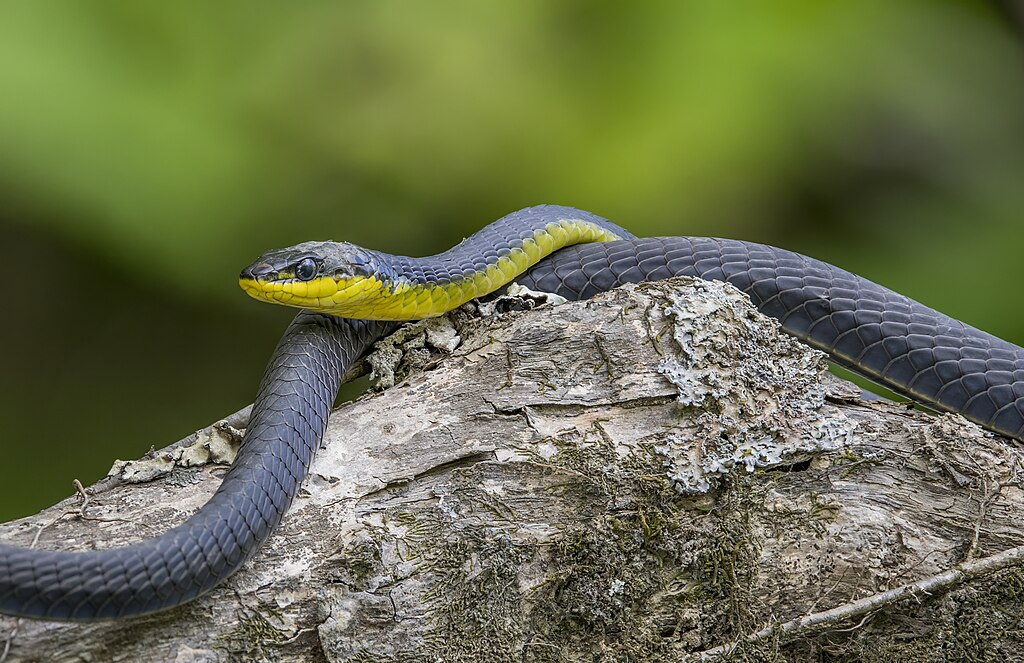
The Australian File Snake (Acrochordus arafurae) has developed one of the most unusual skin adaptations in the snake world, with its entire body covered in tiny, bristle-like scales that create a rough, file-like texture—hence its common name. This specialized skin structure serves a critical function in the snake’s aquatic hunting strategy. Unlike the smooth scales of most aquatic snakes, the file snake’s rough, loose skin creates increased surface area that improves grip when capturing slippery fish. When a file snake wraps around a fish, the specialized skin texture effectively prevents the prey from escaping, functioning somewhat like microscopic Velcro. Additionally, these loose skin folds contain specialized sensory receptors that can detect vibrations in the water, helping the snake locate prey even in murky conditions with poor visibility. Perhaps most remarkably, female file snakes can use their specialized skin folds to grip and manipulate their eggs during live birth, ensuring offspring are delivered safely into aquatic environments. This multi-purpose skin adaptation represents a sophisticated evolutionary hunting tool that has allowed file snakes to become highly successful predators in freshwater habitats throughout northern Australia and New Guinea.
Evolutionary Advantages of Specialized Hunting Tools

The development of specialized hunting tools in these nine snake species demonstrates the remarkable power of evolutionary adaptation in response to ecological pressures. By evolving unique physical structures and behaviors specifically tailored to their hunting needs, these snakes have been able to exploit food resources and habitats that would otherwise be inaccessible, effectively reducing competition with other predators. These specializations often represent evolutionary trade-offs—the spider-tailed viper’s elaborate tail lure, for example, requires energy to develop and maintain, and potentially increases vulnerability to the snake’s own predators. However, the enhanced hunting success these adaptations provide clearly outweighs their costs, as evidenced by the evolutionary persistence of these specialized traits. Perhaps most fascinating is how these adaptations often represent convergent evolution, where similar hunting challenges in different environments have led to comparable solutions in unrelated snake species. These specialized hunting tools not only highlight the incredible diversity of snake hunting strategies but also serve as compelling examples of how natural selection shapes organisms to fill specialized ecological niches.
Conservation Implications for Specialized Hunters
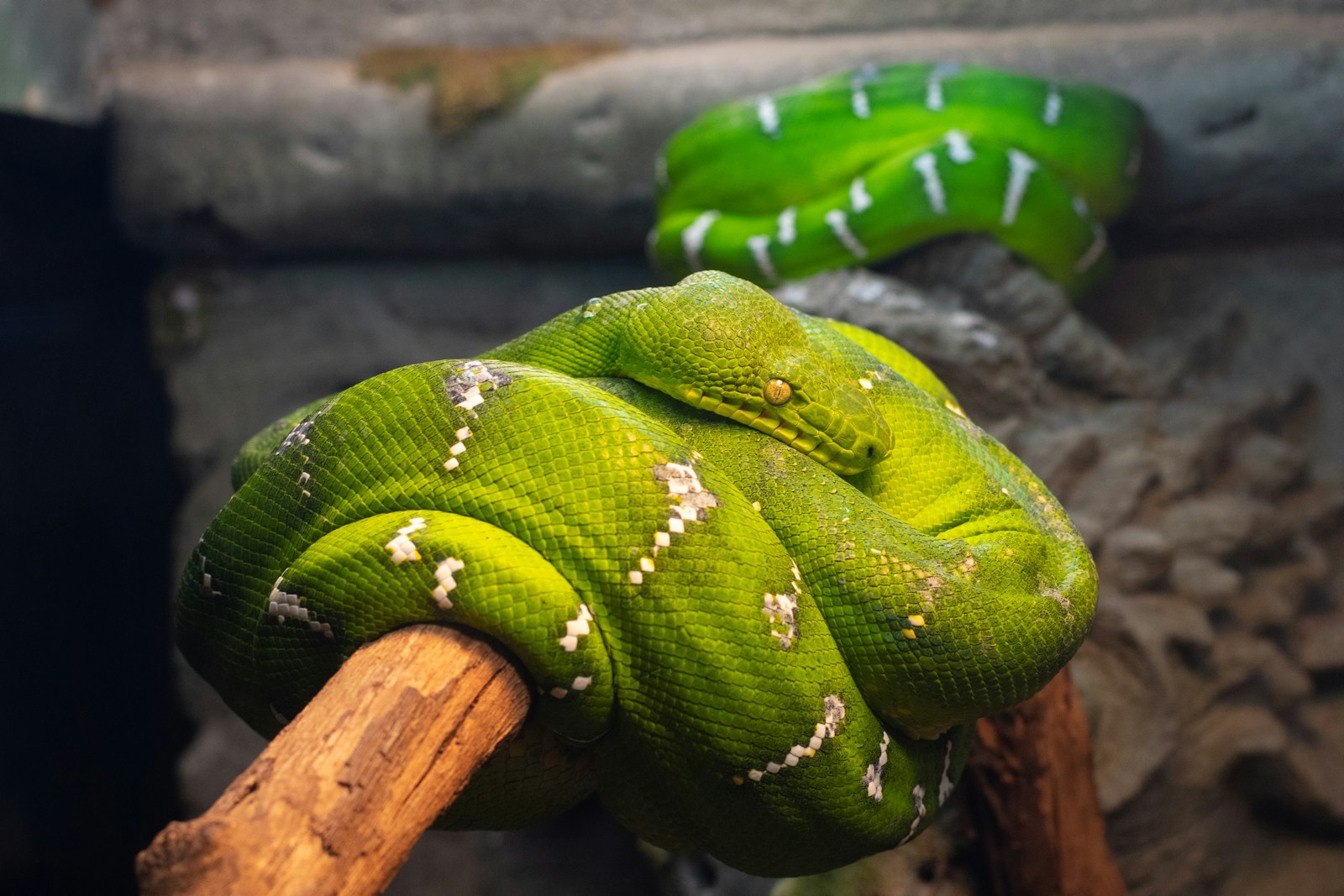
The highly specialized hunting adaptations that make these nine snake species so remarkable also render them particularly vulnerable to environmental changes and habitat disruption. Species with narrow ecological niches and specialized hunting tools often lack the adaptability to quickly adjust to new conditions or prey availability. The Spider-Tailed Horned Viper, for instance, depends on specific bird species being attracted to its tail lure—if these bird populations decline due to climate change or habitat loss, the viper’s specialized hunting strategy becomes less effective. Similarly, aquatic specialists like the Tentacled Snake face threats from water pollution and wetland drainage, which can disrupt the sensitive pressure detection systems they rely on for hunting. Conservation efforts for these specialized hunters must take into account not just the preservation of the snakes themselves, but also the complex ecological relationships and specific environmental conditions that allow their unique hunting adaptations to function effectively. Understanding these specialized hunting tools and their ecological contexts is therefore not merely of academic interest, but essential for developing targeted conservation strategies that can protect these evolutionary marvels for future generations to study and appreciate.
The remarkable diversity of specialized hunting tools exhibited by these nine snake species demonstrates the incredible adaptability and evolutionary innovation present in the natural world. From the deceptive lures of the spider-tailed viper to the pressure-sensitive scales of aquatic hunters, these adaptations represent millions of years of refinement through natural selection. Each specialized tool perfectly suits its owner’s ecological niche, allowing these snakes to exploit resources and hunting opportunities unavailable to more generalized predators. As we continue to study these fascinating adaptations, we gain not only a deeper appreciation for the complexity of snake biology but also important insights into evolutionary processes that shape all life on Earth. These specialized hunters remind us that nature’s ingenuity often exceeds our imagination, with solutions to predatory challenges that continue to surprise and inspire scientific investigation.

